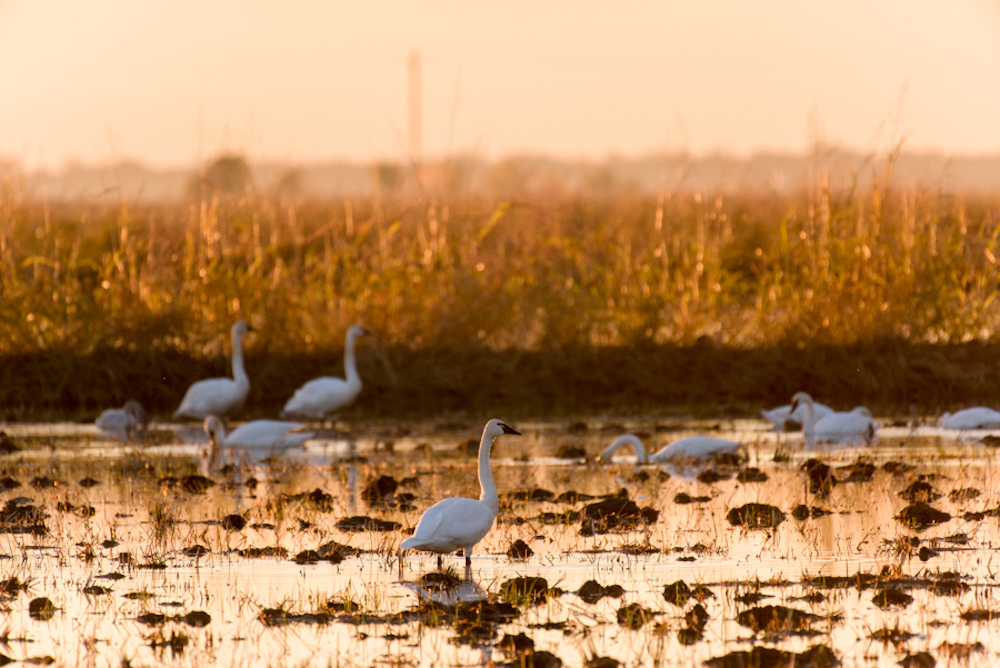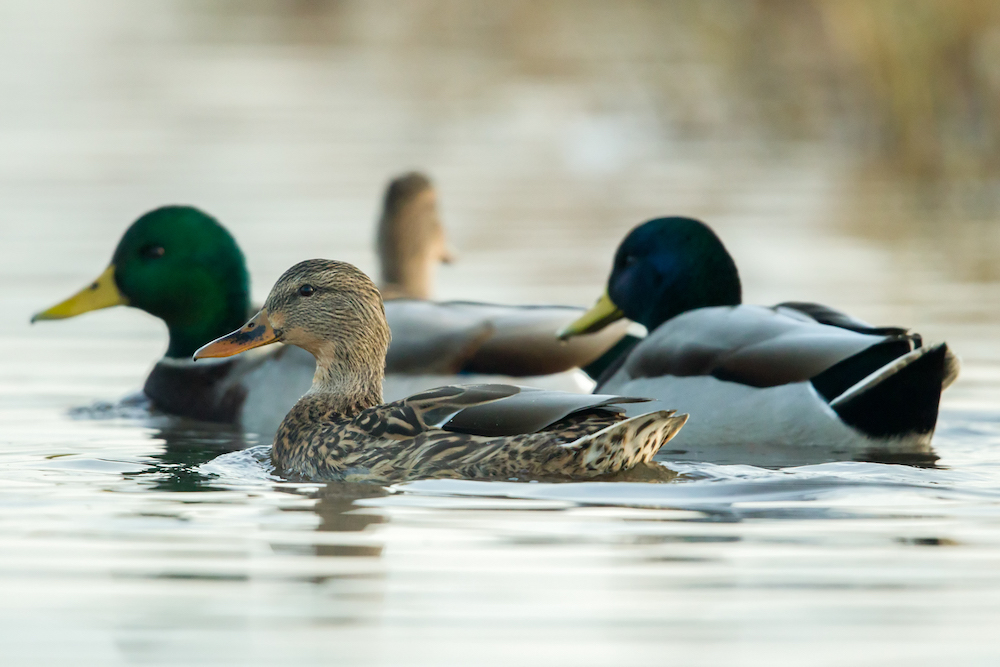Winter Visitors Take Flight
By Luke Matthews
The annual migration down the Pacific Flyway brings bring tens of millions of waterfowl, shorebirds and raptors to California. This migration results in one of the largest concentrations of waterfowl anywhere in the world. For roughly 6 months of the year, residents in California’s Sacramento Valley are able to enjoy the spectacle that this migration brings.

In the early fall birds start arriving in small groups that build into larger flocks until the migration peaks in December. These birds thrive in the Valley, enjoying the relative warm winter conditions here. Now, sparked by lengthening days and warming weather many of these birds have started their migration north, back to their summer home ranges. This outward migration also builds slowly and is similar to their arrival. At first it is not even noticeable as small family groups and pairs leave the Valley, but as winter turns to spring larger groups of ducks, geese and cranes can be seen congregating and taking flight together and moving north. Soon the flooded rice fields and managed wetlands that were once teaming with life will be empty, except for a small number of local birds.

The migration this year faced some harsh conditions due to drought in California and throughout the West and the bird conservation community was very concerned about the fate of the migration. Lack of water impacted the amount of available habitat and food for these migrating birds and as a result, the potential for starvation, early emigration or mass die-offs from diseases such as Botulism and Cholera were all real possibilities. In order to ensure there was strong collaboration and information sharing across the state, The California Department of Fish and Wildlife coordinated bi-weekly meetings throughout the winter. These meetings provided an important opportunity for managers to stay ahead of potential issues as the drought unfolded. Thankfully, in the end, conditions were better than expected this winter and there were no large disease outbreaks or emigration events documented.
There is still a small window of time to see some of these birds on the Wildlife Areas and National Wildlife Refuges, but numbers are declining every day. As the birds travel north out of California, we hope that they find good conditions on their breeding grounds so that they can raise a new generation of birds.
Luke Matthews is the Wildlife Programs Manager for the California Rice Commission






